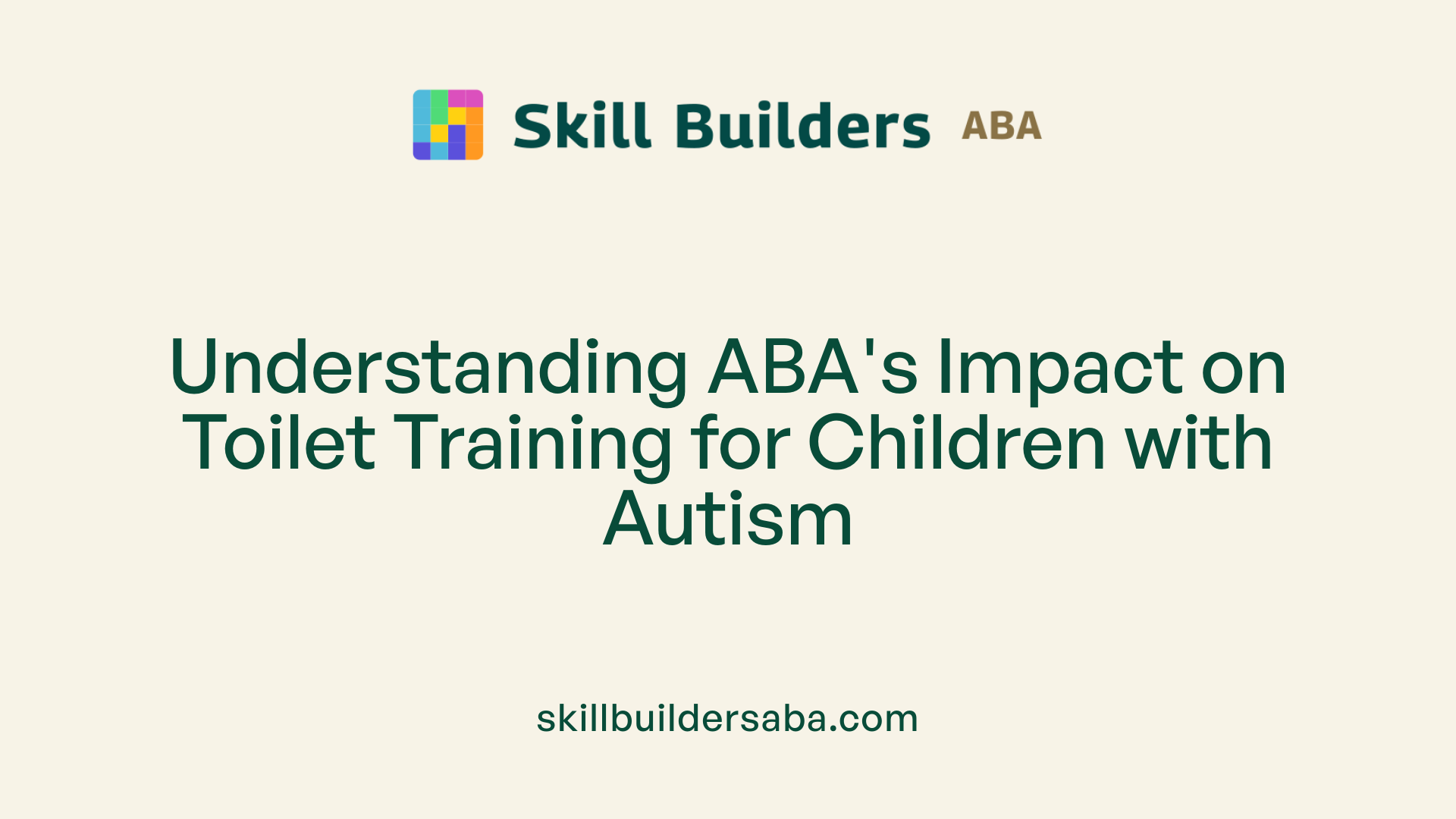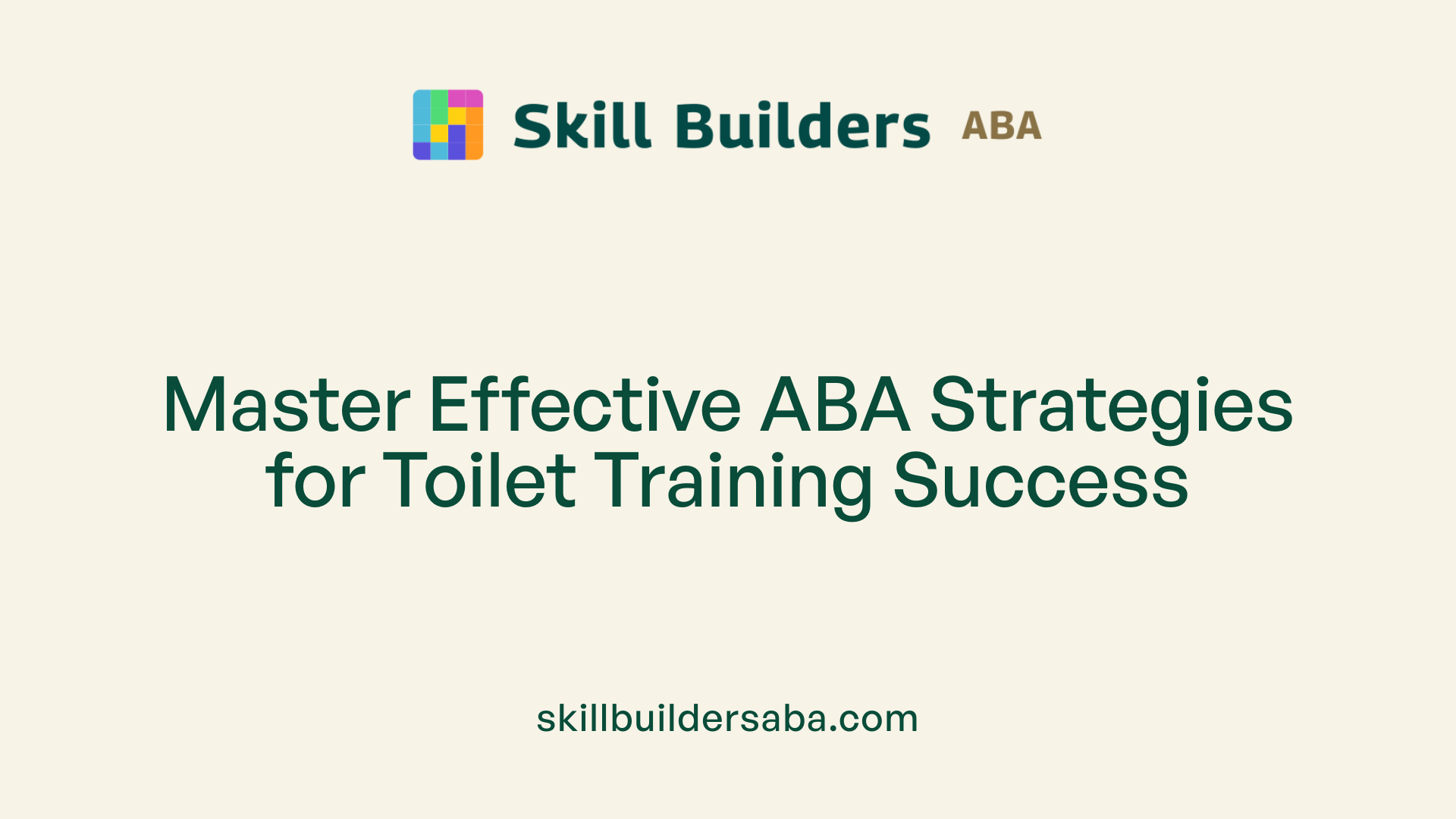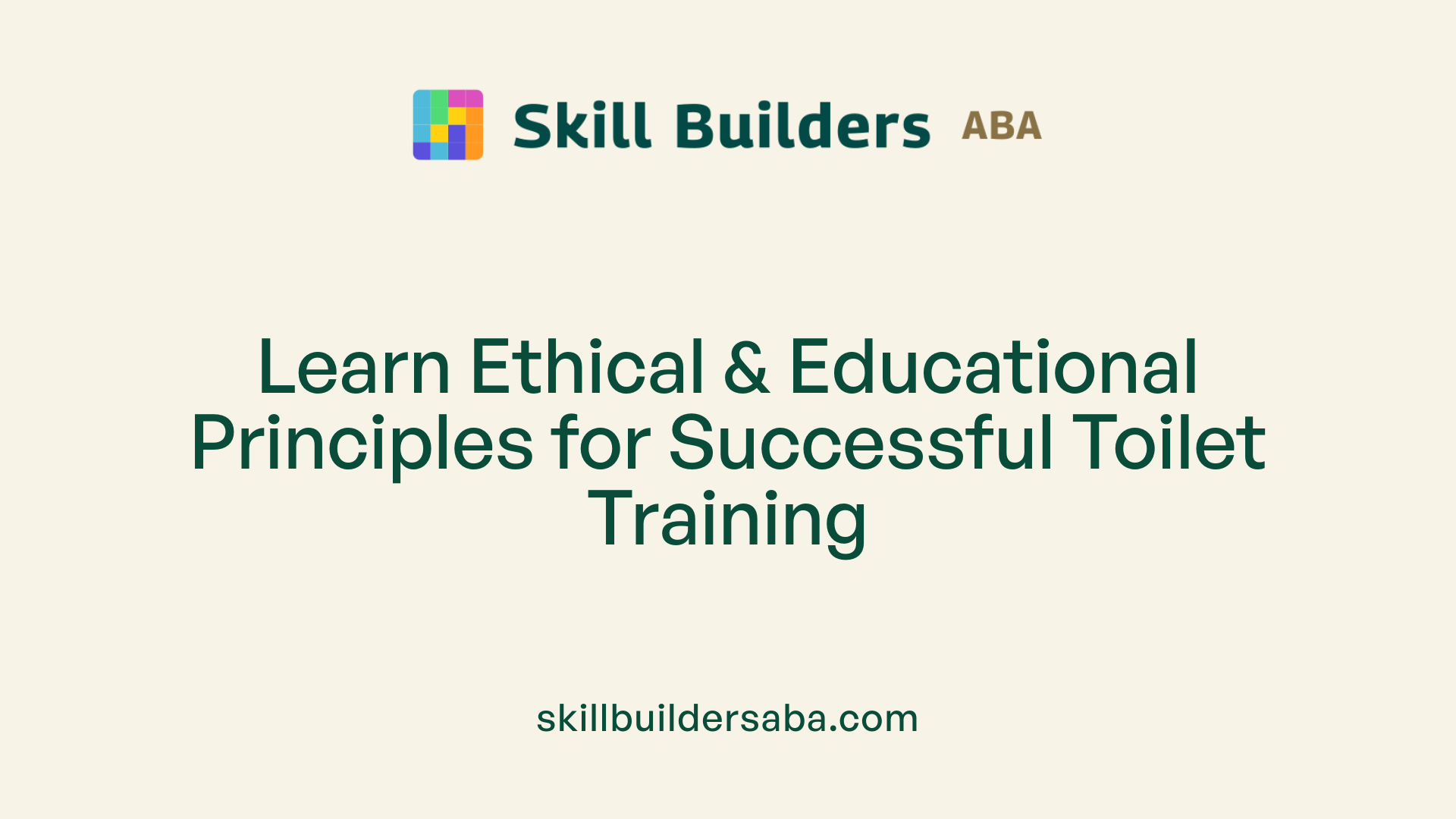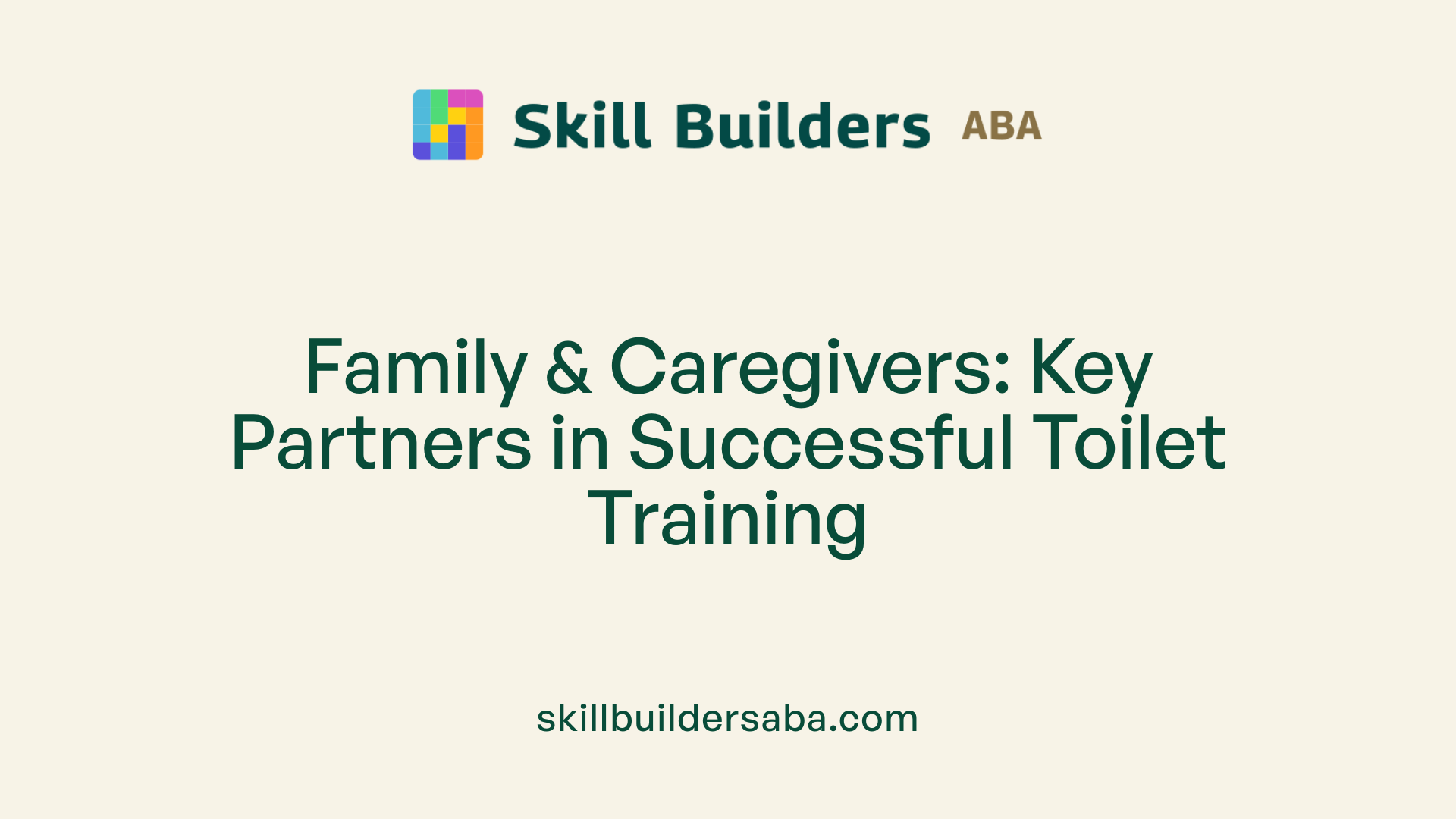
The role of ABA in toilet training
Transforming Toilet Training with Evidence-Based Strategies
Enhancing Independence through ABA
Applied Behavior Analysis (ABA) has emerged as a vital approach in facilitating toilet training for children with autism and developmental delays. Its structured, evidence-based methods are tailored to meet each child's unique needs, ensuring effective skill acquisition and promoting independence across various environments. This article explores the principles, strategies, and outcomes of ABA in toilet training, emphasizing its significance in clinical and educational settings.
Overview of ABA's Role in Toilet Training

What is the role of ABA in toilet training for children with autism and developmental delays?
Applied Behavior Analysis (ABA) is a fundamental approach in teaching toilet skills to children with autism and developmental delays. It provides a structured, step-by-step framework that helps children learn essential toileting behaviors through reinforcement and systematic instruction.
ABA techniques include breaking down the toilet training process into small, manageable steps, such as recognizing bodily cues, sitting on the toilet, and wiping afterward. Visual supports like schedules and cues aid children in understanding routines and promote independence.
Positive reinforcement is central to ABA, where children receive immediate praise or rewards—like preferred foods, activities, or tokens—when they succeed in using the toilet properly. This encourages repeated appropriate behaviors and helps diminish accidents.
The program emphasizes scheduled bathroom visits, often every half-hour or as suitable for the child's behavior, and promotes gradual increases in the time between visits as mastery develops. Regular data collection monitors progress, guiding prompt adjustments tailored to each child's needs.
Implementing ABA for toilet training involves trained staff, such as paraprofessionals, who can use prompting strategies and reinforcement consistently, with minimal clinical oversight. This approach not only fosters independence but also aligns with ethical standards for behavioral interventions.
In essence, ABA transforms toilet training into an achievable, positive experience by systematically teaching new skills, supporting children with autism and delays in gaining a vital life skill, and promoting their overall autonomy.
Key Strategies and Techniques in ABA Toilet Training

What are the techniques and strategies of ABA used in toilet training?
Applied Behavior Analysis (ABA) integrates several structured strategies for effective toilet training in children with autism and developmental delays. These include positive reinforcement, systematic prompting, task analysis, and reinforcement schedules.
Positive reinforcement is central to ABA toilet training. Children are rewarded immediately for successful behaviors such as urinating in the toilet, often with praise, preferred foods, or activities. Reinforcers aim to motivate the child and increase the likelihood of repeated success.
Prompting methods—such as verbal prompts, gestures, or physical guidance—are used to assist children through each step of the toileting process. These prompts are gradually faded as the child becomes more independent, promoting autonomous toileting skills.
Task analysis involves breaking down the complex toileting routine into smaller, manageable steps like pulling down pants, sitting on the toilet, wiping, and washing hands. Teaching each step sequentially helps children master the entire process systematically.
Consistent schedules, like scheduled toilet sits every half-hour or tailored to the child's behavior, support routine-building. Visual supports, such as visual schedules, charts, or social stories, aid in understanding and following the routine, fostering independence.
Monitoring progress through data collection on toileting patterns allows caregivers to make informed adjustments. This personalized approach, involving parents and educators, ensures skill transfer across different settings, supporting consistent behavior and success.
What are prompting methods and fading techniques?
Prompting techniques in ABA include verbal cues, gestural prompts, and physical assistance, all designed to guide the child toward the desired behavior.
These prompts are used initially to ensure success and are systematically faded over time—either by reducing prompt intensity, increasing the number of independent responses required, or using time delay strategies. This fading process helps children gain confidence and independence in toileting.
How is task analysis and step breakdown used?
Task analysis involves dividing the toileting task into small, teachable steps. For example, the sequence might include walking to the bathroom, pulling down pants, sitting on the toilet, urinating or having a bowel movement, wiping, flushing, and handwashing.
Teaching these steps explicitly, using prompts when necessary, ensures mastery of each component before progressing, leading to smoother skill acquisition and generalization.
How are reinforcement and visual supports employed?
Reinforcement involves immediate praise or rewards following successful toileting. This positive consequence strengthens the behavior.
Visual supports—including schedules, charts, or social stories—serve as visual cues that help children understand what to do and when. These tools improve routine adherence and foster independence.
Together, these strategies form a comprehensive approach that makes toilet training manageable, engaging, and successful for children with autism.
Foundational Principles and Methods of ABA in Toileting
What are the principles and methods of ABA applied to toilet training?
Applied Behavior Analysis (ABA) offers a structured and effective approach to toilet training, especially for children with autism or developmental delays. The process begins with a thorough assessment of the child's readiness, including physical capabilities such as bladder and bowel control, awareness of bodily signals, and communication skills.
Once readiness is established, the training is broken down into small, manageable steps called task analysis. These steps include recognizing the need to urinate or defecate, walking to the toilet, pulling down clothes, sitting, wiping, and handwashing. Each step is taught systematically, using prompting techniques like verbal cues or physical assistance, which are gradually faded to promote independence.
Reinforcement plays a vital role in encouraging desired behaviors. The program uses highly motivating reinforcers, such as favorite foods or activities, delivered immediately after successful toileting attempts. Differential reinforcement of correct responses and neutral reactions to accidents help establish positive patterns while reducing undesirable behaviors.
Consistency and routines are emphasized, with scheduled 'potty sits' every half-hour or based on the child's cues. Visual supports like schedules, charts, and timers help children understand and follow the routine independently. Parents and caregivers are integral, participating in training to ensure that strategies are applied consistently across different environments.
Patience and data collection are essential. Progress is monitored by tracking toileting patterns, success rates, and accidents, allowing for individualized adjustments to the intervention. Patience is crucial, as setbacks like accidents are viewed as part of learning rather than failures.
Overall, ABA methods applied to toilet training involve a blend of task analysis, prompting, positive reinforcement, routine establishment, and data-driven adjustments, making the process systematic and personalized for each child's needs.
Stages and Process of ABA-Based Toilet Training
What are the stages and process of ABA-based toilet training?
ABA-based toilet training follows a structured process designed to teach children with autism or developmental delays how to use the toilet independently. The process begins with an assessment phase, where caregivers and educators evaluate whether the child is physically and behaviorally ready. This includes checking for bladder and bowel control, awareness of bodily functions, and the child's willingness to participate.
Preparation during this initial stage involves different strategies such as building a desire to use the toilet through diet and fluid management, eliminating clothing barriers like diapers and Pull-ups, and desensitizing the child to sitting on the toilet. Communication skills are also fostered to help the child request toileting.
Once readiness is established, the core teaching phase involves breaking down toileting into small, manageable steps. These steps include recognizing the urge to go, walking to the bathroom, pulling down clothing, sitting on the toilet, and wiping or handwashing. Each step is taught using task analysis, prompting, and reinforcement. Teachers may initially provide full prompts and gradually fade them out to encourage independence.
Scheduled
Evaluating the Effectiveness of ABA in Toilet Training
What are the benefits and effectiveness of ABA in facilitating toilet training?
Applied Behavior Analysis (ABA) has proven to be a highly effective approach for toilet training children with autism and developmental delays. One study demonstrated that all five participants successfully achieved mastery, with 100% correct urination responses, within a span of 32 to 88 school days. This structured method emphasizes breaking down the process into smaller, manageable steps, such as sitting on the toilet, pulling down pants, and wiping, and using prompting and fading techniques to foster independence.
Reinforcement strategies are central to ABA's success. Children are praised immediately after successful toilet use and rewarded with preferred items or activities. This positive reinforcement encourages continued participation and helps establish consistent bathroom routines. Scheduled 'potty sit' sessions every half-hour or as indicated by the child's behavior are used to promote regular toileting, and data collection ensures ongoing monitoring of progress.
The approach also includes gradual schedule thinning, where intervals between bathroom visits increase as mastery is achieved. This promotes generalization of skills across various environments and routines. Visual aids like charts and schedules further support children in understanding and following toileting steps independently.
Structured routines, reinforcement, and individualized strategies make ABA programs adaptable and effective. The evidence indicates that even staff with minimal clinical oversight, such as paraprofessionals in school settings, can successfully implement these strategies, leading to substantial improvements in toileting skills. Overall, ABA’s systematic and positive approach significantly enhances independence in toilet training, making it a preferred method for children with autism.
Educational Guidelines and Ethical Practices in ABA Toilet Training

How does individualized planning and systematic instruction support ABA toilet training?
In ABA toilet training, customizing the approach for each child's abilities and needs is essential. This involves an initial assessment to identify developmental readiness, physical control, and communication skills. Based on this, a structured plan breaks the process into manageable steps—such as recognizing the need to use the toilet, sitting on it, and wiping.
Systematic instruction includes scheduled potty sits at regular intervals, starting with brief durations like 3 minutes, and gradually extending as the child gains mastery. Reinforcers such as praise, preferred activities, or edible treats are used immediately after successful efforts to motivate consistent participation.
This tailored approach ensures the child builds confidence and skills at a comfortable pace, minimizing frustration and setbacks.
The Significance of Family and Caregiver Involvement

What is the role of family and caregiver involvement in ABA toilet training?
Family and caregiver participation play a crucial part in the success of ABA-based toilet training. Their involvement ensures that support, routines, and reinforcement strategies are consistent across both home and community settings. When caregivers are actively engaged, they are equipped to implement methods like scheduled bathroom visits, positive reinforcement, and prompt fading reliably.
Consistency in routines creates a predictable environment, helping the child develop confidence and understanding of the toilet training process. This familiarity across different environments fosters better generalization of skills, enabling the child to independently use the toilet in various settings.
Moreover, collaboration among therapists, teachers, and family members is essential. Joint efforts allow for continuous progress monitoring, effective problem-solving, and sustained motivation. By working together, caregivers and professionals can adapt strategies as needed, address setbacks calmly, and celebrate successes, leading to more durable and successful toilet training outcomes.
Overall, involving family and caregivers creates a supportive framework that enhances learning, promotes independence, and ensures that toilet training is a positive, reinforcing experience for the child, ultimately resulting in more lasting skills.
Summary and Future Directions in ABA Toilet Training

Summarizing Effectiveness and Benefits of ABA in Toilet Training
Applied Behavior Analysis (ABA) has proven to be a highly effective method for teaching toilet skills to children with autism and developmental delays. The approach involves a structured breakdown of the toileting process into small steps, such as recognizing the need to go, sitting on the toilet, wiping, and handwashing. These steps are taught systematically using prompts, fading techniques, and visual supports to help children learn independently.
Reinforcement plays a central role in ABA, with praise, preferred foods, or activities provided immediately after successful bathroom use. This positive reinforcement encourages children to continue practicing and developing consistent routines. Scheduled 'potty sits' and other routines create a predictable environment, which helps children generalize skills across various settings.
The results from studies, including recent interventions, show a high success rate with all participants achieving mastery, often within a few months. The data-driven nature of ABA allows practitioners to monitor progress carefully, adjust strategies as needed, and ensure individualized support.
New Developments and Research Directions
Ongoing research in this field emphasizes refining techniques to make toilet training more accessible and less intrusive. Innovations include utilizing technology for reinforcement, incorporating visual schedules more effectively, and integrating parent and caregiver training for consistency outside of school. Researchers are also exploring the use of more naturalistic teaching procedures and environmental modifications that can further facilitate skill acquisition.
Furthermore, studies are addressing how to better support children with additional challenges, such as sensory sensitivities or communication barriers. Advancements aim to make ABA toilet training adaptable to diverse needs and settings, including home, school, and community environments.
The Importance of Tailored, Ethical Practice
While ABA provides a robust framework for toilet training, its success hinges on individualized plans respectful of each child's unique skills and preferences. Ethical practice calls for thorough assessments of readiness, continuous data collection, and positive reinforcement strategies that promote dignity and independence.
Future directions suggest integrating family involvement and using culturally sensitive approaches to broaden the reach and effectiveness of interventions. Emphasizing less intrusive, more natural approaches alongside traditional ABA methods holds promise for sustainable and positive outcomes.
| Aspect | Current Practice | Future Outlook | Details |
|---|---|---|---|
| Target Skills | Stepwise toileting | Personalized skill sets | Tailoring intervention to individual needs |
| Reinforcement Methods | Immediate praise, preferred items | Technology-based reinforcement | Use of apps or digital rewards |
| Settings | Preschool, school | Community and home environments | Broader applications for generalized success |
| Support and Training | Paraprofessionals, parents | Family-centered models | Greater involvement and training for caregivers |
| Ethical Considerations | Positive reinforcement | Adaptive, culturally-sensitive practices | Respecting child dignity and autonomy |
This evolving landscape underscores ABAs adaptability and effectiveness in supporting toileting independence, with ongoing innovations promising even more tailored and accessible interventions.
Shaping Future Skills with ABA
The application of ABA in toilet training demonstrates a robust, ethical, and adaptable approach to teaching essential independence skills to children with autism and developmental delays. Its emphasis on individualized plans, systematic routines, reinforcement, and caregiver involvement contributes to high success rates. As research advances, innovations in visual supports, prompting techniques, and data collection methods promise even greater effectiveness and broader application. Overall, ABA remains a vital tool in fostering independence, confidence, and a higher quality of life for children and their families, underscoring its significance in contemporary behavioral intervention.
References
- Toilet Training Children With Autism and Developmental ...
- Daytime Toilet Training with ABA Therapy
- Potty Training Using ABA: A Proven Approach
- Reflections and Critical Directions for Toilet Training in ...
- ABA Therapy Tips for Successful Toilet Training
- The Ultimate Guide to Toilet Training
- Intensive Toilet Training Protocol
- Toilet Training Children With Autism and Developmental ...
- The Ultimate Guide to Toilet Training
- Guide: Simple ABA Techniques for Toilet Training Children ...
Reach Out Today
Learn more about how we can support your child’s growth and development. Contact us to discuss our services and availability in your area.
.svg)